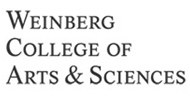Team:Northwestern/Results/Summary
From 2011.igem.org
PROJECT

RESULTS

CONSIDERATIONS

ABOUT US

NOTEBOOK

ATTRIBUTIONS


We characterized more than two dozen parts over the course of this project. Here, we focus our discussion on the biosensor constructs that best illustrate our successful proof-of-concept experiments. These parts are [lasP+RBS30+GFP, CP+RBS30+lasR], [rhlP+RBS30+GFP, CP+RBS30+rhlR], and [GR(S)+RBS34+GFP, CP+RBS34+RhlR].
In order to evaluate the suitability of our biosensor constructs for detecting P. aeruginosa, we conducted a series of dose-response studies for characterization purposes. We also analyzed this data to determine the transfer function and dynamic range of each biosensor system.
 |
Our first observation was that the construct [lasP+RBS30+GFP, CP+RBS30+lasR] appears to be well-suited as a binary sensor and can be used to simply determine whether or not P. aeruginosa is present in a sample. The construct follows the same general trend of fluorescence at varying autoinducer concentrations, except for the negative control in which no autoinducer was present. There is a significant amount of overlap in the error bars in Figure 1, so T-tests were conducted in order to evaluate the statistical significance of this observed trend, as detailed below in Table 1.
 |
In the first 30 minutes after autoinducer dosages were given, only the sample that was given 100μM of PAI-1 exhibited a response that was significantly different from the other samples (Table 1A). Our data also indicated that fluorescence per OD changed significantly over time in each sample (Table 1B). Meanwhile, the negative control decreased in fluorescence per OD, due to relatively steady total fluorescence coupled with rapid of cell growth, as shown in Figure 2 below. All the samples showed similar fluorescence readings except for the 0.1μM, to some extent the 0.5μM, and of course 0μM PAI-1 negative control.
 |
In order to further characterize this biosensor, we next plotted the steady state fluorescence (per OD) vs. autoinducer concentration to determine the input-output transfer function (Figure 3). As indicated by the analysis and discussion above, in this “binary” biosensor, fluorescence per OD stayed relatively constant (within about 10% of the mean fluorescence per OD) for all samples treated with PAI-1 autoinducer, and all samples exhibited significantly different behavior in contrast to the negative control sample.
 |
In contrast to the binary detection system, the construct [rhlP+RBS30+GFP, CP+RBS34+rhlR] is well suited for determining the concentration of P. Aeruginosa by detecting and discriminating between different concentrations of autoinducers. Figure 4 below details the fluorescence per OD observed upon the induction of the system with multiple autoinducer concentrations. Unlike the binary detection system, the fluorescence per OD of each of the curves is distinguishable from the other concentrations.
 |
For the most part, overlapping of error bars only occurs when the concentration of the autoinducer increases beyond 15μM which is not relevant for clinical purposes. Notably, autoinducer concentrations between 0μM and 5μM are clear and distinguishable. However, in order to statistically confirm the variance of each concentration curve, t-tests were conducted as detailed below in Table 2.
 |
As we observed with the PAI-1 biosensor, only the 100μM sample significantly induced PAI-2 biosensor 1 within the first 30 minutes (Table 2A).
Table 2b tests the activation of each construct. This is accomplished by comparing the data from the initial segment of the curves (before any fluorescence is observed) with the final steady state fluorescence (last 10 data points). Similar to the observation made in the binary system, each construct changes a statistically significant amount when exposed to the autoinducer. Surprisingly, the 0μM autoinducer sample also has a statistically significant change. However, in this case, the induced constructs produce orders of magnitude more fluorescence than the negative control, so any cell bias introduced by either an OD irregularity is insignificant and can be ignored.
Table 2C compares the data from each of the final steady state segments of the curves with the other final steady state segments (last 10 data points). As can be observed, almost every single steady state fluorescence curve is different than the other. The two exceptions are the 7.5μM-10μM, and the 15μM-20μM autoinducer concentration samples. It is important to note that 10μM-15μM and 20μM-50μM concentration samples have statistically significant responses. In fact, the high degree of discrimination between relative autoinducer concentrations strongly qualifies this construct to be a concentration sensor. The steady state fluorescence per OD is presented in figure 5. The logarithmic regression fits the data quite well, and proves that the construct can potentially be used in as a sensor.
 |
In addition to designing plasmid systems using the existing and available biobricks, we also designed a plasmid containing an inducible promoter extracted from the genome of P. aeruginosa. Out of all the parts that we derived from the P. aeruginosa genome, the construct [GR(S)+RBS34+GFP, CP+RBS34+RhlR] was most suited to autoinducer detection. Figure 6 shows our GR(S) promoter is sensitive to a range of autoinducer and requiring, on average two hours for reach full induction.
 |
Just as in the previous concentration detecting system, the genomic promoter system also discriminates very well between the varying autoinducer concentrations. To confirm our results, we conducted t-tests to validate the observed significance between the curves. The t-tests conducted follow the same format as the two described above and is detailed below in Table 3.
 |
Table 3A, as before, compares the early time points, before GFP is induced (t=30 min). The genomic promoter construct had better uniformity in early time points than our concentration detection system (discussed above). The initial data of almost every sample coincided with that of the negative control (0μM). Once again, the 100μM sample exhibited induced fluorescence quickly. Thus, virtually all the samples exhibit fluorescence similar to that of the negative control at this short time point.
Table 3B, as before, shows promoter activation, by comparing the data from the initial segment of the curves (before any fluorescence is observed) with the final steady state fluorescence (last 10 data points). Similar to the observation made in the binary system, each construct changes a statistically significant amount when exposed to the autoinducer. The only outlying t-test in this characterization is the 0.1μM-20μM comparison, which may indicate that the uninduced state of the 20μM autoinducer sample was close to the induced state of the 0.1μM autoinducer sample’s fluorescence per OD.
Table 3C compares the data from each of the final steady state segments of the curves with the other final steady state segments (last 10 data points). The data validates the claim that the fluorescence per OD of every single steady state curve is statistically different than the others. This result is further highlighted by the steady state fluorescence per OD vs. autoinducer concentration in figure 8. The low error and an extremely well fit logarithmic regression, and proves that the construct can not only works exactly the way it should, but is our most suited construct to be used in a sensor.
 |
In the modelling section, the theoretical math behind the system was discussed. In order to fully understand our system, the mathematical model had to support the experimental data. Consequently, the sensitivity analysis was conducted (also in the modelling section) to gauge which factors influenced the system the most. A number of parameters were found to exert a significant amount of influence on the system. Each of these parameters was carefully adjusted until the theoretical graphs closely resembled those received from experimental testing as demonstrated below in Figure 8.
 |
Upon administration of the autoinducer concentration, the intracellular concentration of the autoinducer increases dramatically due to its passive transport through the cell membrane. Similarly, the initial concentration of R-protein is quite high relative to the other biochemical species in the cell due to its constitutive production. However, the increase in intracellular autoinducer concentration facilitates an instantaneous drop in the (free) R-protein concentration. The R-protein/dimer concentration level increases almost simultaneously, inducing the R-protein/autoinducer induced promoter. The sudden rise in the dimer complex facilitates a sudden increase in expression of the reporter construct or GFP. The concentration of GFP continually increases due to the increasing concentration of the dimer complex.
Autoinducer concentrations continue to drop until the reversible binding of the R-protein, autoinducer and the dimer complex reach steady state. This approximately happens at 150 minutes. At this point, most the autoinducer is bound to the dimer complex, and the remaining amount is degrading. In a way, the dimer complex is protecting the autoinducer from degradation, which maintains steady r-protein and dimer complex levels. Meanwhile GFP is being generated due to the initial excessive amount of reporter expression. However, when the R-protein and dimer complex reach steady state, so does GFP expression. additionally, the model fits the fluorescence data in the above characterization graphs. If one were to closely observe the GFP curve, the concentration actually decreases slightly over an extended period of time, which is exactly what was observed experimentally.
On the whole, we demonstrated that our biosensor constructs were functional and are excellent candidates for a cell-based biosensor system for either PAI-1 or PAI-2. Both the Las and Rhl reporter constructs exhibited fluorescence that was statistically significant relative to the controls at most or all of the autoinducer concentrations we tested. Compared to the Las (PAI-1) construct, the Rhl (PAI-2) systems produced more fluorescence overall and output levels were more strongly dependent on the concentration of autoinducer used (potentially indicating a broader dynamic range for these biosensors). The Las construct produced very similar fluorescence values at almost every autoinducer concentration. Our results provide detailed characterizations of both the original registry Las & Rhl promoters on which our constructs are based, as well as the newly assembled biosensor constructs we generated. Our results also provide a solid basis for a synthetic cell-based “device” that can detect the presence of Pseudomonas Aeruginosa.
Our RFP constructs were not as successful. The results were inconsistent and the signals did not seem to be correlated to the presence of the autoinducers. Although we were not able to determine the cause of this problem, we have put the parts in the registry for future investigation.
In addition to working with the Las and Rhl dependent promoters already on the registry, we also characterized some new promoters isolated directly from the Pseudomonas genome. This resulted in another potential set of promoters for use in a Pseudomonas detection device. In particular, the Rhl-dependent promoter we extracted from the genome showed excellent sensitivity to PAI2.
For complete characterization information on all of our parts, please refer to our Biobricks page. Clicking on a part will take you to the Registry of Standard Biological Parts, where the complete analysis for that part is posted.
Refer here for our testing protocol.
 "
"




